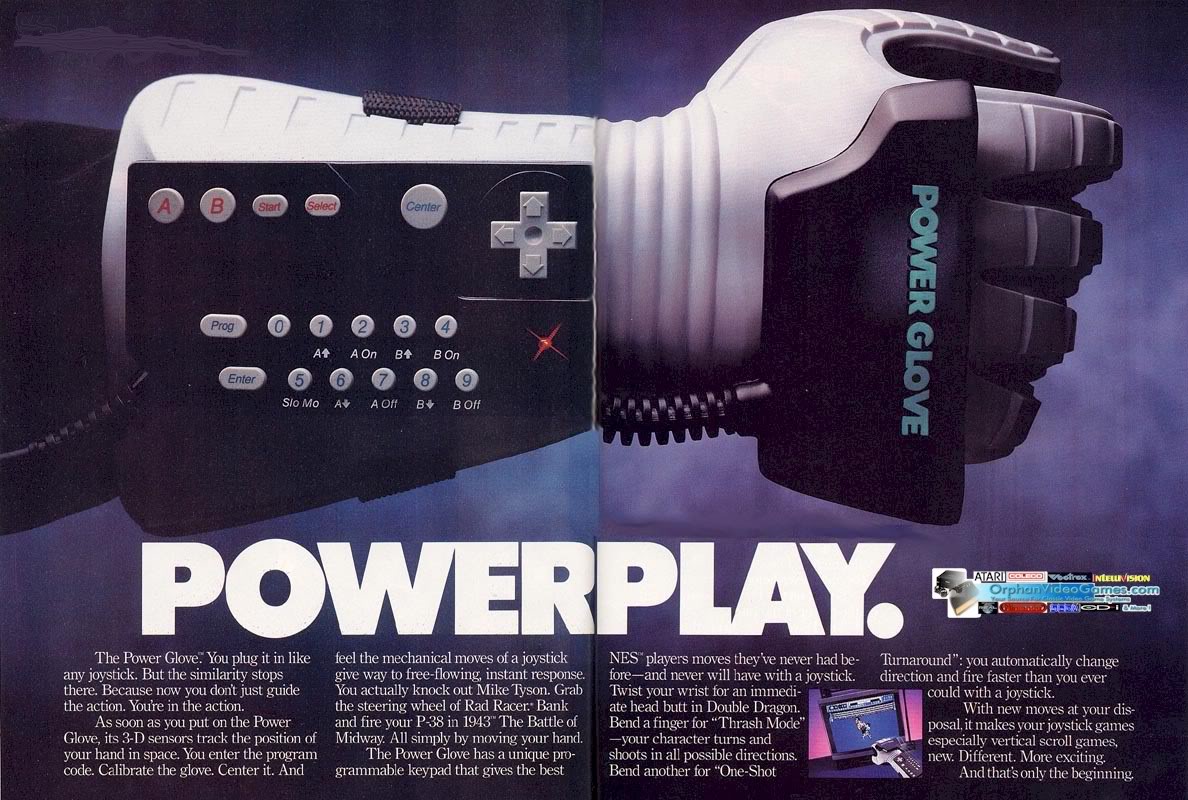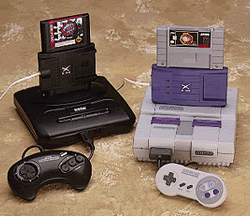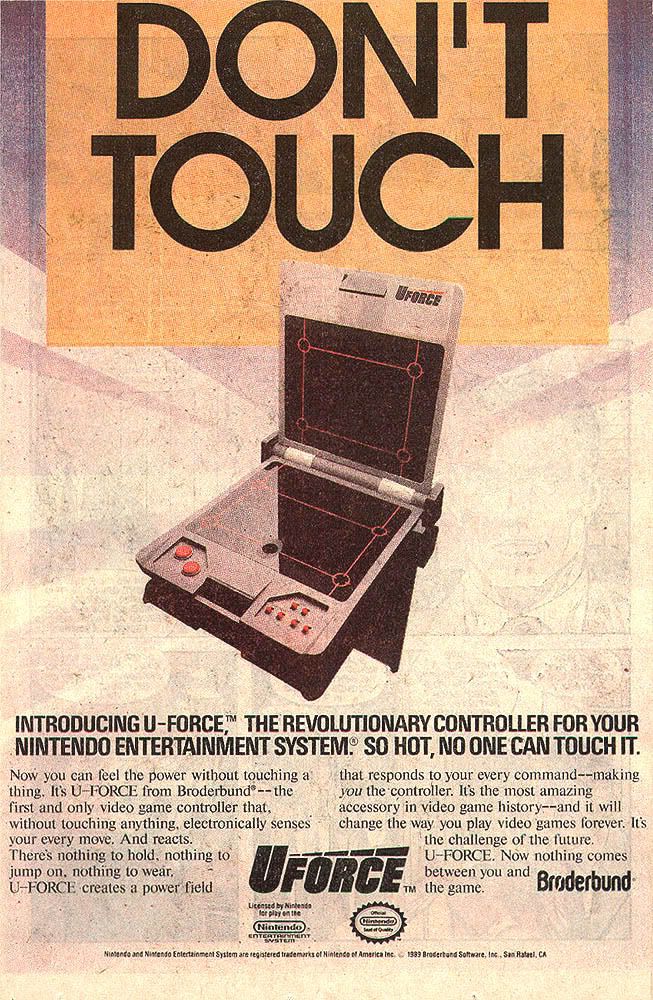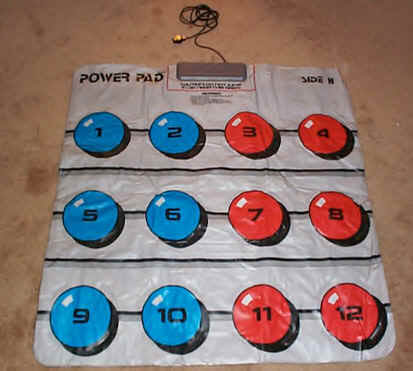This post has not been edited by the GamesBeat staff. Opinions by GamesBeat community writers do not necessarily reflect those of the staff.
Editor's note: Jeff's history lesson provides a sobering — and hilarious — look at the history of gaming peripherals. It's a must-read for anyone excited about Project Natal or Sony's wand controllers. -Brett

Maybe you've seen them at your local video game shop: piles of odd looking plug-ins, add-ons, and thingamajiggers in the corner collecting dust, over-excited proclamations screaming from their worn boxes — "FULL BODY ACTION!" "Everything else is child's play!" "Now nothing comes between you and the game!"
What are they? Gaming's forgotten history, that's what. A history that could possibly repeat itself with the heaps of futuristic peripherals coming out from Sony, Microsoft, and Nintendo.
Not that I blame them for trying to sell gamers on the future. The positive perception of any video game company is fueled by technophiles in lust. However, if the technophiles would stuff their e-boners back into their file and think back a decade or two, they might remember that while the tech has improved, the promises haven't changed much.
And if they don't remember, I'm here to help: Here are five gaming technologies that were ahead of their time — and the lessons companies can learn from them today.
XBAND
 A lot of younger gamers won't realize it — and a lot of older gamers probably don't remember it — but the XBAND modem provided dial-up online gaming for the Super Nintendo and Genesis long before Xbox Live won over the hearts of foul-mouthed prepubescent gamers everywhere.
A lot of younger gamers won't realize it — and a lot of older gamers probably don't remember it — but the XBAND modem provided dial-up online gaming for the Super Nintendo and Genesis long before Xbox Live won over the hearts of foul-mouthed prepubescent gamers everywhere.
The XBAND was similar in form to the Game Genie — you plugged it into the system and then plugged the game into the XBAND — and the service itself would be familiar to anyone who has taken their Xbox online. Players could house up to four codenames on an XBAND modem cart, and each codename could have up to 10 people on a friends list. Unlike Xbox Live, however, each game had to be reverse engineered to work with XBAND, because support for the peripheral was almost non-existent.
Despite that fact that the system worked rather well with games like Super Mario Kart, most games suffered from lag. Until broadband penetrated the market, there was no way online gaming would be anything other than a niche experience.
What Xbox Live owes XBAND: The importance of each game supporting online and a limited friends list.
U-Force
Sony's demonstration of their new magic wand controllers at last year's E3 was impressive, but it also brought back terrible memories of that NES add-on nightmare known as the U-Force.
The U-Force was an infrared controller that turned the waving of the player's hands into on-screen commands. That's what it was supposed to do, anyway. Instead it became one of the easiest ways to induce gamer rage.
Sony's wands are using a very different technology, but they're essentially trying to accomplish the same goal — and that scares me.
What Sony's wands owe the U-Force: Proof that there should be something to hold when you game.

Power Glove
The Power Glove is probably the most famous of these old peripherals, likely because it's "sooo bad." (For the record, that's "so bad" like Lucas from The Wizard would say it, not like everyone who has ever used a Power Glove would say it — though that definition of "so bad" applies here as well.)
A funny thing about the relationship between the Power Glove and a modern Wii Remote: they're pretty much the inverse of each other. Instead of a motion control device that wraps around our hand, we now have a motion control device that we wrap our hand around.
Of course, the Wii Remote takes advantage of technological innovations like the accelerometer and the sensor on the television. More importantly, the Wii Remote has gobs of good software built specifically for it. The games built for the Power Glove — like Super Glove Ball (made by Rare, of all companies!) — were, in a word, terrible.
What the Wii Remote owes the Power Glove: The importance of proprietary software and a lot of money spent on research and development.
Sega Activator

"FULL BODY ACTION" is a quote off the box of the Sega Activator peripheral, and I hope that Microsoft adopts it as their slogan for Natal.
Like the U-Force, the Activator was an infrared controller, but this time you stood inside an octagon on the floor that shot infrared beams into the air that you could interrupt with hands, feet, animals, and private parts. These interruptions would be then interpreted as button presses. Essentially, it was supposed to turn sweet real-life air kicks into sweet video game air kicks.
There's one problem with that idea: it's stupid. The games that the Activator worked best with were still designed for a regular controller, essentially turning the Activator into nothing more than a huge, cumbersome controller laying on the ground. The Activator wasn't really about turning your motions into actions. It was about pressing buttons on a magic, infrared controller with your body.
Natal fixes that by using a camera, but it doesn't fix the problem that my sweet air kicks don't look sweet to anyone else — and to be honest, I don't even think they're that sweet.
What Natal owes the Activator: The important lesson that the body is not a controller.
Power Pad
 It took a long time for video game companies to remember that the Power Pad controller for the NES was actually a success.
It took a long time for video game companies to remember that the Power Pad controller for the NES was actually a success.
The Power Pad was a floor-mat controller that had twelve A and B buttons laid out across it. Nintendo packaged it with World Class Track Meet, which allowed players to mash on those buttons with their feet to complete each mode in the game. It was simple, it was fun, and it worked.
But after the Power Pad, no company took advantage of the fact that gamers liked jumping around foolishly as long as the foolish jumping around was accurately translated into the game — until Komani's Dance Dance Revolution took the arcade world by storm.
Konami later moved the DDR dance pad from the arcade and ported to the home in essentially the same form as the Power Pad. Nintendo took notice and transformed the dancing and mashing into the Wii Fit Board.
What Wii Fit and the DDR dance pad owe the Power Pad: Proof that gamers don't hate body control peripherals. They just hate body control peripherals that don't work.
